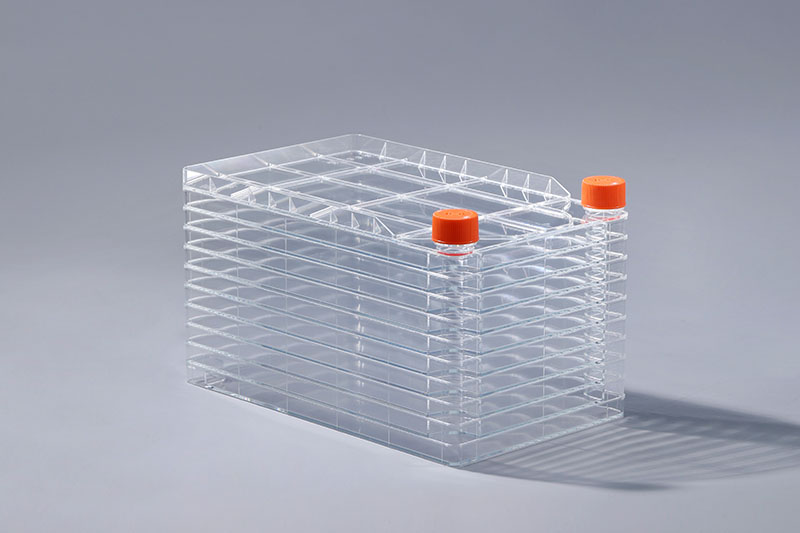Cell factory culture technology plays an important role in the fields of monoclonal antibody and vaccine preparation. When culturing cells, it will be affected by various factors, among which the cell inoculation density will also affect the cell culture process.
When using cell factories for large-scale cell culture, the number of cell inoculations has a direct impact on the growth of cells. An appropriate inoculation density can promote better cell proliferation. Too high or too low inoculation density is not conducive to cell growth and proliferation. How to choose the appropriate inoculation concentration should be determined according to the cell metabolism, growth and reproduction speed and the needs of the work.
Generally speaking, cells with strong metabolism and fast growth (such as tumor cells) should be inoculated at a lower concentration; while normal tissue cells grow slowly and their metabolism is not vigorous enough, the inoculation concentration may be higher; For emergency use, the inoculation can be lower; sometimes in order to facilitate the observation of cell morphology, the inoculation concentration can also be appropriately reduced. Ordinary cells can be seeded according to the number of cells per unit area of the cell factory, multiplied by the cell factory culture area used, and then divided by the seeding ratio of cultured cells. Too high or too low inoculation amount of cells is not conducive to cell reproduction. Appropriate cell inoculation amount is the premise to ensure the normal growth of cells.
The cell seeding density is an important factor affecting the cultured cells of the cell factory. Only by controlling the appropriate density can the cell culture experiment be carried out smoothly.
The FAI climbed 5.9 percent year-on-year in the first 11 months of 2018, quickening from the 5.7-percent growth in Jan-Oct, the National Bureau of Statistics (NBS) said Friday in an online statement.
The key indicator of investment, dubbed a major growth driver, hit the bottom in August and has since started to rebound steadily.
In the face of emerging economic challenges home and abroad, China has stepped up efforts to stabilize investment, in particular rolling out measures to motivate private investors and channel funds into infrastructure.
Friday's data showed private investment, accounting for more than 60 percent of the total FAI, expanded by a brisk 8.7 percent.
NBS spokesperson Mao Shengyong said funds into weak economic links registered rapid increases as investment in environmental protection and agriculture jumped 42 percent and 12.5 percent respectively, much faster than the average.
In breakdown, investment in high-tech and equipment manufacturing remained vigorous with 16.1-percent and 11.6-percent increases respectively in the first 11 months. Infrastructure investment gained 3.7 percent, staying flat. Investment in property development rose 9.7 percent, also unchanged.
 English
English



















































